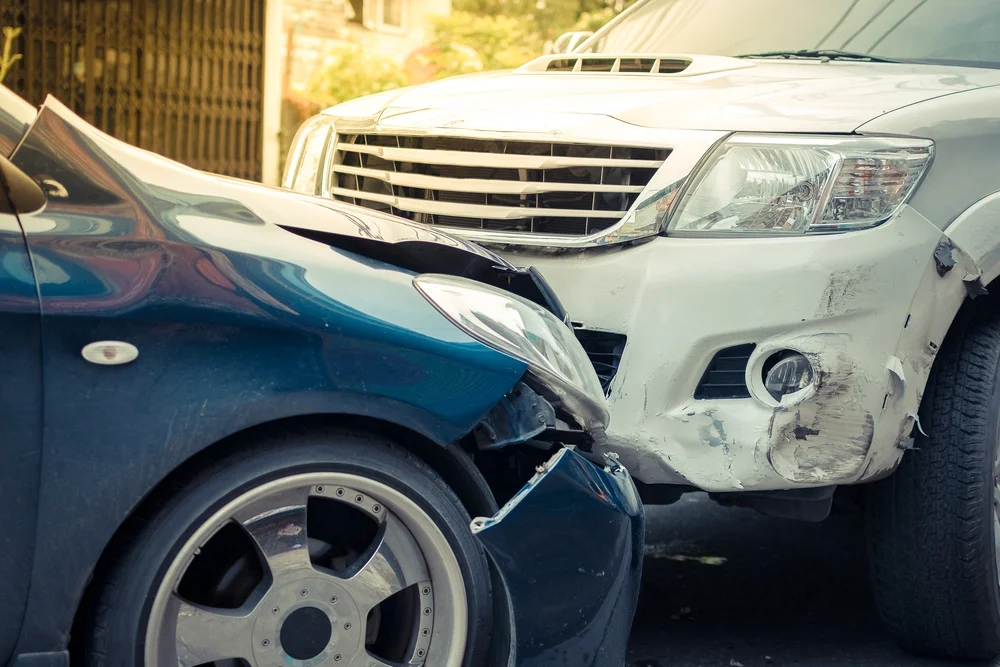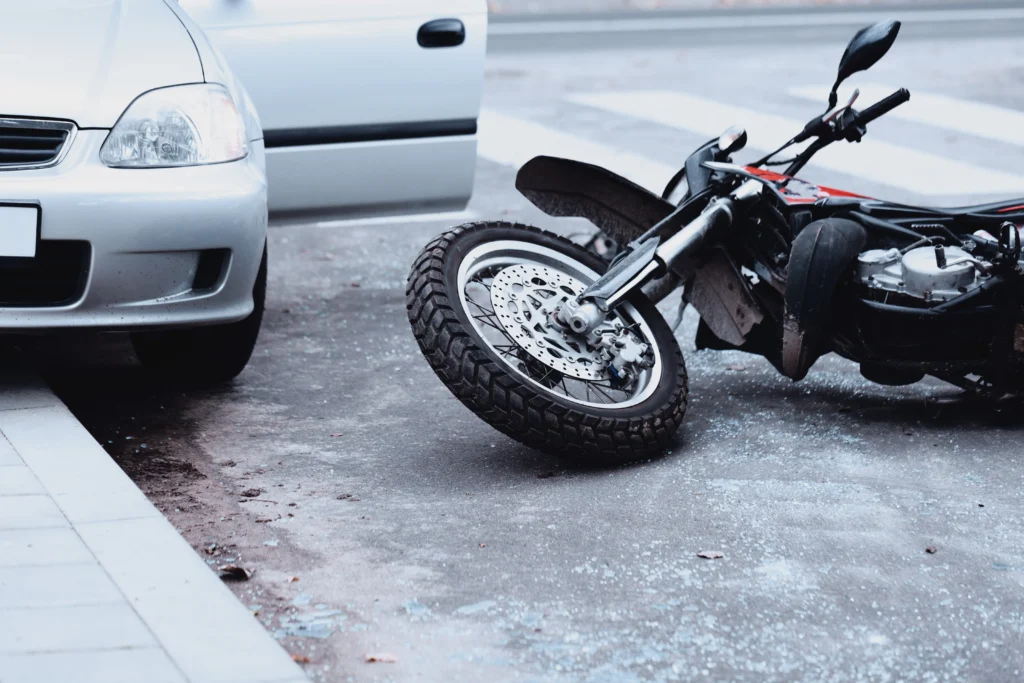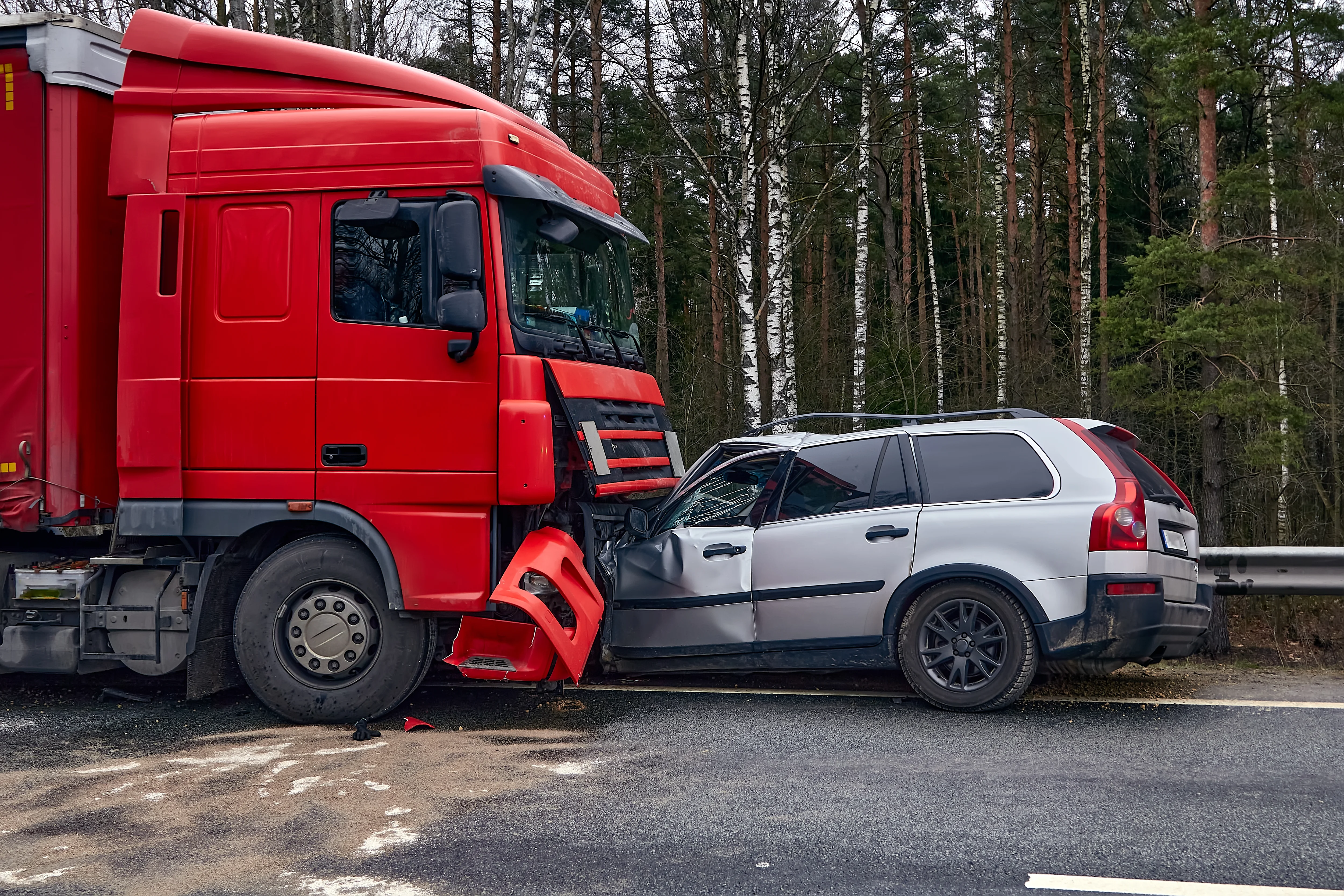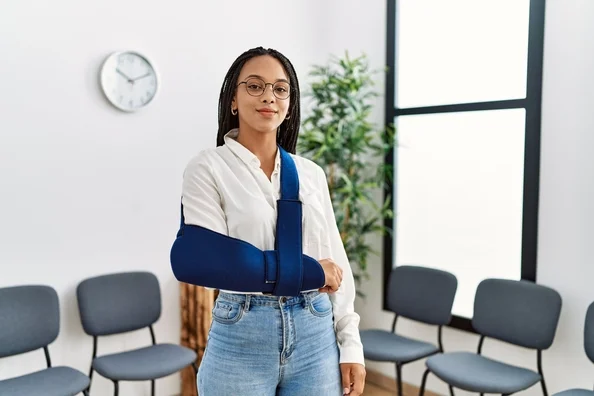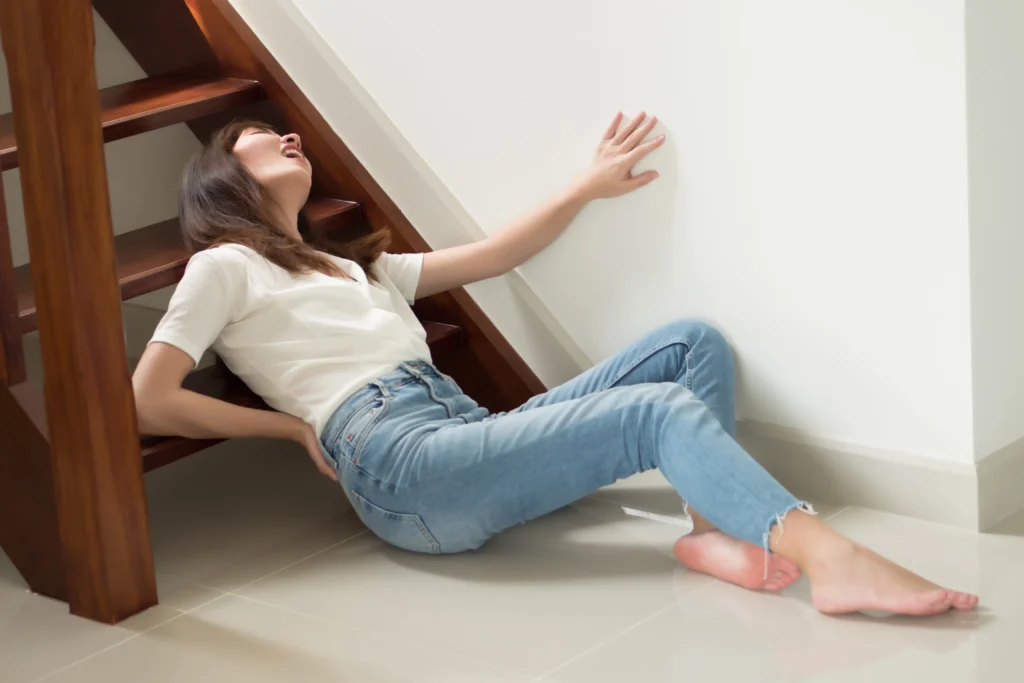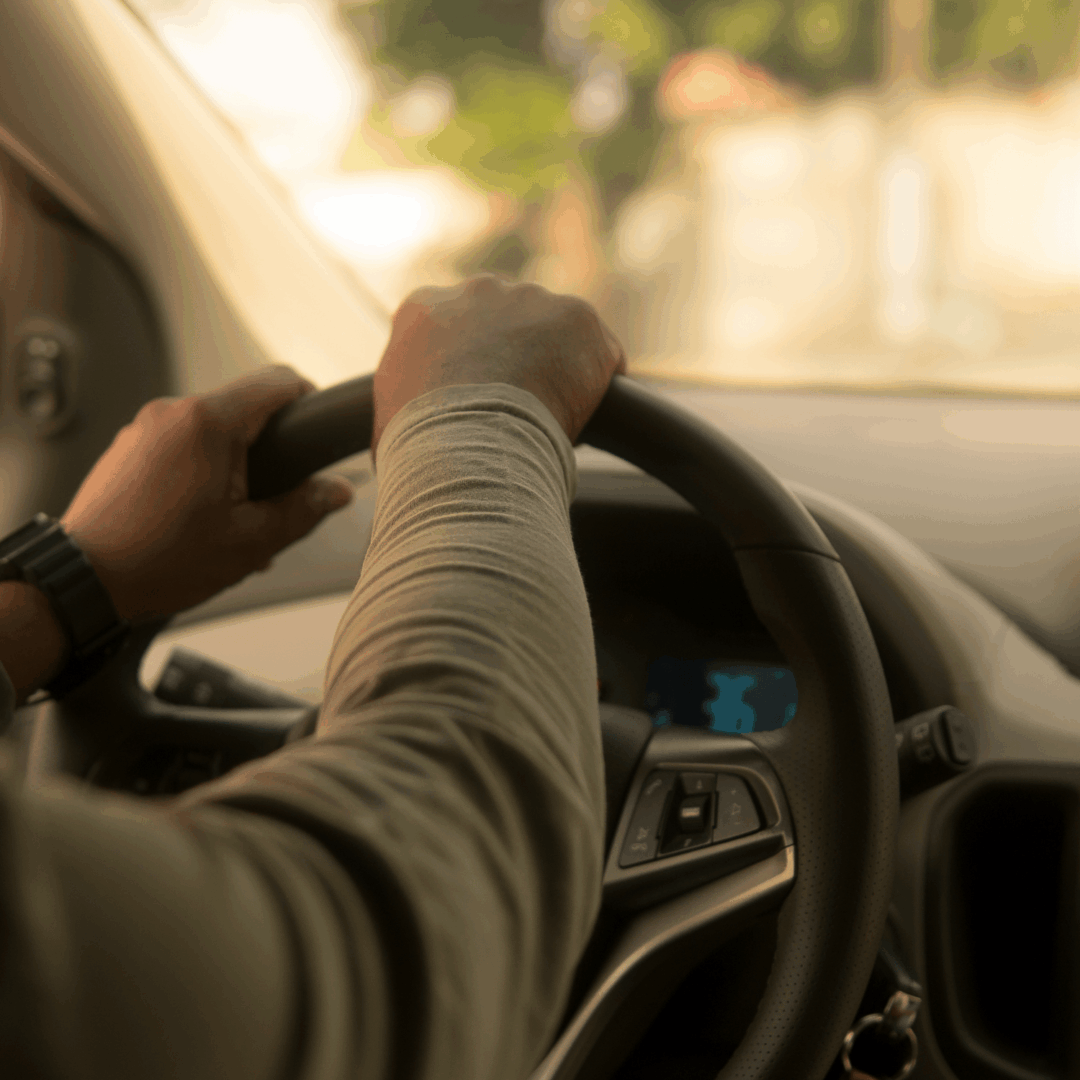Grafton Slip and Fall Accident Attorneys
A slip and fall can change a Grafton family’s life in a single moment. One second you are walking into a store, down an apartment stairwell, or across a hospital corridor, and the next you are on the ground with sharp pain, confusion, and fear about what comes next. Many victims discover that injuries from a fall are not “minor” at all. Broken hips, torn ligaments, concussions, and spinal injuries often require surgery, months of therapy, and extended time away from work.
Falls are especially dangerous for vulnerable groups. For older adults, even a single fall can lead to life-threatening complications, such as hip fractures that result in permanent mobility loss. The Centers for Disease Control and Prevention (CDC) reports that one out of every five falls causes a serious injury like a broken bone or head trauma, and more than 800,000 people are hospitalized each year because of fall-related injuries. For people who have recently had surgery or those managing chronic conditions, recovery after a fall may be longer and more complex. Pregnant women also face unique risks, as a sudden impact can endanger both mother and child.
At Kaufman & McPherson, we help Grafton and Taylor County families make sense of the legal process and pursue the full compensation they need for medical care, lost income, and long-term recovery. Our attorneys understand the physical pain and emotional strain that come with a sudden fall, and we fight to hold negligent property owners accountable so that victims can focus on healing.
Understanding Slip and Fall Claims in West Virginia
A slip and fall claim is a type of premises liability case. Property owners and managers have a legal duty to maintain reasonably safe conditions and to warn guests about hazards they know about or should know about with proper inspection. When wet floors, worn stairs, broken handrails, ice, cluttered walkways, poor lighting, or unsafe design cause a fall, the owner or manager can be held responsible for the harm. The standard is not perfection; the law asks whether the business or property owner acted as a reasonably careful person would under similar circumstances. If they ignored a problem, delayed repairs, or failed to warn customers and tenants, they may be liable for the injuries and losses that follow. In Grafton, these claims commonly arise at grocery stores, parking lots, rental homes, medical facilities, schools, and construction sites.
What You Must Prove
To win a slip and fall case, you usually must show four things. First, the property owner or manager owed you a duty as a customer, tenant, visitor, or worker. Second, they breached that duty by creating a hazard or by failing to fix or warn about a hazard in a reasonable time. Third, that breach caused your fall. Fourth, you suffered actual damages, such as medical bills, lost wages, or pain and limitations. Much of the real work in these cases is gathering the right proof: photos and videos of the hazard, incident reports, witness statements, maintenance logs, snow and ice removal records, cleaning schedules, and any prior complaints that show the risk was known. A detailed timeline can connect the hazard to the fall and can defeat the common defense that the owner “did not have time” to find or fix the problem.
Common Places and Conditions That Lead to Falls in Grafton
Certain locations pose higher risks because they see heavy foot traffic or because conditions change quickly throughout the day. Grocery stores and retail aisles are common sources of spills. Restaurant entryways collect tracked rain and snow. Apartment stairwells can have worn treads, loose carpeting, or shaky banisters. Parking lots may have broken pavement and poor lighting, which makes hazards hard to see at night. Hospitals and clinics can have polished floors, equipment cords, and crowded hallways that increase slip and trip risks. Weather matters as well. Ice or compacted snow near building entrances is a frequent source of winter falls across Taylor County. If owners fail to spread salt, shovel, post warnings, or place mats, they increase the danger to guests and delivery workers.
How Fault Is Shared in West Virginia
West Virginia code follows a modified comparative fault rule. If an injured person is partly at fault, the recovery is reduced by that percentage. Recovery is barred only if the person is found more than 50 percent responsible. This is why careful evidence collection matters. Clear photos, maintenance records, and witness statements can prevent unfair blame shifting, for example, when a business argues that a customer should “have watched where they were going,” even though the spill was clear and the lighting was poor. West Virginia’s comparative fault standard is set out in state law, and it controls how courts and insurers evaluate responsibility and negotiate settlements.
Who Is Most at Risk and Why It Matters for Your Claim
Some people face special risks in a fall, and the law considers those realities. Children, older adults, pregnant women, and people with recent surgeries or medical conditions can suffer more severe injuries from the same hazard. Medical literature and public health data confirm that falls are the leading cause of injury for older adults, and even a “simple” fall can trigger a cascade of complications. When we build a case, we make sure the insurance company understands the specific medical risks for that client, the longer recovery timelines, and the higher long-term costs that follow.
Older Adults and Seniors
For adults over 65, a fall is often far more serious than a bruise or a sprain. Hips are more fragile, balance is often affected by medications, and subdural hematomas can develop even after what looks like a minor bump to the head. National data show that more than one in four older adults falls each year and that falls are the leading cause of injury and injury death in this age group. The CDC has also documented millions of emergency department visits related to older adult falls and emphasizes that many falls are preventable with better lighting, hazard removal, and timely maintenance. When an older adult in Grafton falls because a property owner cut corners, the financial and human impact is enormous and deserves full recognition in any settlement.
Older Adults and Lengthy Recoveries
Recovery often takes longer for seniors. Hip fractures may require joint replacement and extended rehabilitation. A concussion can bring weeks of confusion, dizziness, or headaches, which complicates medication management and daily safety. Fear of falling again can reduce activity, which leads to muscle loss and higher fall risk later. Families often need to install grab bars, improve lighting, add railings, or arrange in-home care to protect a recovering parent or grandparent. These post-injury needs are compensable and should be carefully documented with receipts, therapy notes, and physician recommendations.
Pregnant Women and Fall Risks
A fall during pregnancy demands immediate medical attention because both the mother and fetus can be affected. Obstetric guidance explains that even moderate trauma can lead to serious outcomes such as placental abruption, preterm labor, or fetal distress. A slip on a wet floor or an uneven surface is not just an inconvenience for a pregnant person. It can be a medical emergency that warrants observation and specialized care. If a property owner failed to address a known hazard and that failure led to a fall during pregnancy, a claim should account for emergency evaluations, maternal and fetal monitoring, time away from work, and any longer-term complications. Authoritative guidance in obstetrics recognizes falls as a common mechanism of trauma in pregnancy and underscores the need for careful evaluation.
Pregnancy, Falls, and the Risk of Fetal Loss
A slip and fall during pregnancy can have devastating consequences, including the tragic loss of a child. Even when the mother seems outwardly uninjured, the sudden impact can cause internal trauma such as placental abruption, where the placenta detaches from the uterine wall. This condition may result in severe bleeding and loss of oxygen supply to the fetus, which can lead to miscarriage or stillbirth if not treated immediately. Obstetric literature emphasizes that any trauma during pregnancy, no matter how minor it may appear, requires careful evaluation for both mother and baby. Families enduring such a loss suffer not only medical costs but also profound emotional grief that deserves recognition in legal claims. These cases highlight why property owners must take hazards seriously and why injured mothers should seek immediate medical care and legal guidance.
How We Present Pregnancy-Related Damages
In these cases, we work closely with obstetric providers to collect fetal monitoring strips, ultrasound reports, delivery records, and notes on any restrictions or complications. We also document the practical effects at home and at work, including activity limits and time away from employment. If a fall forced early delivery or extended hospitalization, those costs and the emotional impact belong in the damages analysis. Compassionate presentation of these facts helps insurers and juries understand what the family endured.
People With Recent Surgery or Pre-Existing Conditions
A fall can undo months of careful recovery after hip replacement, knee reconstruction, spine surgery, or abdominal procedures. It can also aggravate degenerative joint disease, osteoporosis, or a prior concussion. The law in West Virginia does not excuse a negligent party just because the victim was vulnerable. The at-fault party is responsible for the full extent of the harm. We prove this by collecting pre-accident records, post-accident imaging and operative reports, and detailed therapy notes showing how a client’s function changed. These cases often require a life care planner or treating surgeon to explain why future surgeries, assistive devices, or home modifications are necessary and how long those needs will last.
Documenting Aggravation of a Prior Condition
Detailed comparison is the key. We show the range of motion before and after. We present pain scores, work restrictions, and the specific activities a client lost, such as caring for a spouse, lifting a child, or climbing stairs to a bedroom. Photos of braces or walkers, invoices for ramps and shower chairs, and therapist summaries make the increased burden clear. This documentation helps achieve fair compensation for the injury the property owner caused, not a discounted number that ignores the setback in recovery.
Children and Teens
Children often fall while visiting stores with parents, at apartment complexes, in school hallways, or on poorly maintained playgrounds. Their bones and joints are still developing, so fractures near growth plates and head injuries need careful follow-up. Symptoms of a concussion can appear later and may show up as new problems with attention, mood, or school performance. A claim for a child must consider the years ahead, including future orthopedic care, the possibility of growth disturbances, and needed accommodations at school. Parents should save report cards, notes from teachers, and any neuropsychological testing that shows how the fall changed the child’s daily life.
Talking With Schools About Temporary Supports
If a student has headaches, light sensitivity, or limited mobility after a fall, families can request short-term accommodations. Examples include reduced homework volume, extra time for tests, permission to use elevators, or early dismissal to avoid crowded stairwells. Clear communication between doctors, therapists, and school staff makes this smoother and protects the child’s long-term progress. Keep copies of all notes and emails. They help both recovery and any insurance claim.
Common Causes of Slip and Fall Accidents We See in Grafton
Every property is different, but the causes of preventable falls tend to repeat. Spills that are not cleaned, tracked rain or snow near entrances, loose mats or curled rugs, freshly mopped floors without warning signs, and worn or uneven stair treads are frequent culprits. In parking lots, broken pavement, potholes, and inadequate lighting make hazards hard to see. On construction or industrial sites, cords, hoses, and debris create trip risks, and poor housekeeping turns a manageable site into a dangerous one. Safety guidance (OSHA) also highlights poor handrail maintenance, missing anti-slip strips, and failure to control ice as avoidable risks. Owners and managers who inspect routinely and fix hazards protect visitors. Those who do not expose the public to injuries that should never have happened. For workplaces, federal safety materials detail how walking working surfaces must be kept clear, dry, and well-lit to prevent slips and trips.
The Role of Inspection, Cleaning, and Repair Logs
Inspection and cleaning schedules are powerful evidence. A store that lacks a reasonable plan to check aisles or entries every short interval will struggle to explain a long-standing spill. A landlord who never inspects stairwells for loose treads or missing screws will have difficulty defending a fall on a broken step. We request these logs early and compare the stated procedures against the real conditions in photos and videos. If the logs are incomplete or contradictory, that gap strengthens a negligence claim. When the logs are missing completely, it often shows that the hazard was not a surprise but a predictable result of poor safety culture.
Winter Weather, Ice, and Snow
In Taylor County winters, snow and ice control is a basic safety obligation. Owners should use mats, salt, and clear signage at entrances. Parking lots and sidewalks should be treated and plowed promptly. When mats become saturated or slide out of position, they can make conditions worse rather than better. Photographs that show the condition of the ground, the presence or absence of salt, and the position of mats are often decisive in proving whether an owner acted reasonably. Time-stamped photos taken soon after the fall are especially persuasive.
Lighting and Visibility
Poor lighting magnifies every hazard. Cracked pavement that would be obvious at noon may be invisible at dusk in a dim lot. In indoor spaces, bulbs that are burned out, fixtures that flicker, or shadows cast by displays can make spills harder to see. Because lighting influences how both adults and children perceive depth and distance, we often conduct site visits at the same time of day as the fall to capture the true visibility conditions. If an owner had prior complaints about lighting but delayed repairs, that history shows knowledge of the risk.
Types of Injuries in Slip and Fall Cases
Falls cause a wide range of injuries. Some are immediately obvious. Others emerge over hours or days. Each type requires its own medical plan and legal proof of the resulting costs and limitations.
Hip, Pelvis, and Lower Extremity Injuries
Hip fractures are among the most serious injuries older adults face after a fall. They often require surgical repair or joint replacement, followed by hospitalization and intensive rehabilitation. Even when surgery goes well, many people experience lasting weakness, limp, or the need for a cane or walker. Pelvic fractures can make basic tasks like getting out of bed or using the bathroom extremely painful and can require in-home assistance. Knee injuries, including meniscus tears or ligament sprains, can linger and limit walking on uneven surfaces or stairs. These losses change how a person shops, cares for children, or returns to work, and they must be reflected in any damage calculation.
When a Fall Follows a Recent Hip or Knee Surgery
A fall that occurs during surgical recovery can tear fresh repairs or dislodge implants. Surgeons may need to perform revision procedures with longer rehabilitation and a higher risk of complications. Pain can be more intense and mobility more limited, which increases the need for help at home. We present the pre-fall surgical plan, the surgeon’s updated plan, and the new costs to show how the property hazard set back healing and extended recovery time.
Traumatic Brain Injuries and Concussions
Any strike to the head or rapid whipping motion can cause a concussion or more serious brain injury. Symptoms can include headaches, dizziness, nausea, concentration and memory problems, sleep changes, and mood swings. These effects can disrupt work, school, and family life even when scans are normal. For older adults, there is a higher risk of brain bleeding after a fall, especially when blood thinners are involved. Emergency evaluation is always the safest course if there is confusion, worsening headache, or any loss of consciousness. Brain injuries add months or years of follow-up appointments and often require neuropsychological testing and structured therapy.
Children and Head Injuries From a Fall
Children may not describe symptoms clearly. Watch for irritability, trouble paying attention, headaches after screen time or activities, and a change in grades or behavior. Document these changes and seek pediatric evaluation. If a child slipped on a known hazard in a store or an apartment common area, the claim should consider future needs, not just the first urgent care bill.
Back, Neck, and Spinal Injuries
Falls can cause herniated discs, nerve compression, vertebral fractures, and severe muscle strains. These injuries can bring radiating pain, numbness, and weakness that make lifting, driving, and long periods of sitting very difficult. Treatment may include injections, bracing, or surgery, and many patients need weeks of physical therapy to rebuild strength and stability. When a spinal injury limits the ability to do a job that requires standing, bending, or carrying, the wage loss can be substantial. Documentation from therapists and treating physicians helps link the fall to the ongoing functional limits.
Home Safety and ADA Style Modifications During Recovery
Simple changes can prevent a second fall and conserve energy. Many families add grab bars, non-slip mats, brighter bulbs, handrails at both sides of stairs, and raised toilet seats. For severe mobility limits, ramps, wider doorways, and roll-in showers may be necessary. These are reasonable and compensable expenses when the need was caused by a property owner’s negligence. Keep receipts and provider recommendations to support reimbursement.
Shoulder, Wrist, and Hand Injuries
Instinct leads many people to reach out during a fall. This protective reflex often results in wrist fractures, torn rotator cuffs, or shoulder dislocations. These injuries can require surgery and months of restricted use, which interrupts work that involves lifting, driving, typing, or patient care. For parents and caregivers, shoulder injuries make daily tasks like bathing a child or carrying groceries far more difficult. These real-world impacts matter in a claim and should be carefully explained and proved.
How We Investigate a Slip and Fall Case
A thorough investigation is often the difference between a denied claim and a fair settlement. Our team acts quickly to secure time sensitive evidence. We request incident reports and surveillance video from businesses and ask nearby shops for camera footage before it is overwritten. We photograph the scene from the visitor’s eye level, measure tread depth and stair dimensions, and check lighting at the same time of day as the fall. We demand snow and ice logs, cleaning schedules, and maintenance records that show whether safety was a priority or an afterthought. We also canvass for witnesses who can describe what the floor looked like, whether warning signs were present, and how long the hazard existed.
How You Can Help Right Away
If you are able, take photos or ask a companion to do so. Capture the exact area where you fell, including floors, mats, handrails, steps, lighting, and nearby signs. Report the fall to the manager or landlord and request a written incident report, then ask for a copy. Save the shoes and clothing you wore and do not wash or repair them. Follow medical advice and attend all follow up visits, since gaps in care are often used to argue that injuries were minor. Keep a simple notebook that lists daily pain levels, sleep quality, missed work, and tasks you cannot perform. This diary helps doctors treat you and helps us explain your losses.
What to Do if Workplace Conditions Contributed
Some falls involve a mix of premises liability and workplace safety issues. For example, a delivery driver may slip on an unlit, icy loading zone at a business. OSHA guidance recognizes that well-maintained walking and working surfaces, good lighting, and housekeeping reduce fall risks. If a workplace setting contributed to a visitor’s fall, those same safety principles are helpful in explaining how simple steps would have prevented harm. We may consult safety experts to discuss standards and to show how the hazard violated basic good practice.
Damages and Compensation in West Virginia Slip and Fall Cases
A fair settlement or verdict should reflect both the immediate shock and the long tail of recovery. Economic damages include emergency care, hospital stays, imaging, surgeries, physical and occupational therapy, prescriptions, mobility aids, home modifications, travel to appointments, and wages lost while you cannot work. For children and teens, damages may include future orthopedic care and educational support. For older adults, damages often include extended rehabilitation, in-home care, and assistive devices that will need replacement over time. Non-economic damages compensate for pain, suffering, anxiety, loss of sleep, grief over lost independence, and the ways injuries reduce enjoyment of life. In rare cases involving reckless conduct, punitive damages may also apply.
Deadlines to File in West Virginia
Most personal injury claims in West Virginia must be filed within two years of the date of injury. There are exceptions, but missing the deadline can end a strong case before it begins. For that reason, it is smart to speak with a lawyer as soon as possible, especially if you are still recovering or if key evidence, like camera footage, could be lost. West Virginia’s two-year statute of limitations for personal injury is set by law, and it applies to most slip and fall cases.
How Comparative Fault Changes the Numbers
Insurers often argue that a victim is partly to blame because they were looking at a phone, wearing certain shoes, or should have noticed a spill. Under the state’s modified comparative fault rule, any percentage of fault assigned to you reduces the recovery by the same amount, but recovery is barred only if you are more than 50 percent at fault. Early, careful investigation helps prevent unfair blame by showing how dangerous the condition truly was and how long it existed. We use maintenance logs, lighting measurements, and witness accounts to make that case. The West Virginia Code statute that sets this standard guides judges and juries and gives both sides a realistic framework for negotiation.
Projecting Future Needs
Long-term needs are often the largest part of a slip and fall case. A single hip fracture can lead to years of mobility limitations and increased fall risk. A back injury can prevent a return to heavy work and require retraining for a new role. A concussion can slow thinking and make multitasking at work impossible. We work with treating providers, physical therapists, and, when needed, life care planners, to project the cost of future appointments, equipment replacement, and in-home help. We also document how injuries limit family roles, such as caring for children or an elderly parent, because those losses are part of the full picture.
Practical Safety and Prevention Tips You Can Use
No property owner can erase all risk, yet clear steps reduce danger and protect families. The CDC provides accessible summaries that remind older adults and caregivers that falls are common, costly, and preventable, and that small changes add up to real safety. Remove loose throw rugs, improve lighting at entries and stairs, add handrails on both sides where possible, secure cords, and store frequently used items within easy reach. Review medications with a clinician to minimize dizziness and balance problems. Strength and balance exercises can help reduce fall risk and rebuild confidence after an injury. If you rent, document any unsafe conditions with photos and written requests for repairs; this protects you and speeds up fixes.
Business and Landlord Responsibilities
For businesses, routine inspections, quick cleanup of spills, placement of mats, clear warning signs during cleaning, and timely repair of lighting and handrails are basic steps that protect guests. For landlords, keeping stairs and sidewalks in good repair, replacing missing handrails, clearing ice, and responding promptly to tenant reports reduces risk and legal exposure. Good records of inspections and repairs help prove diligence. Poor records often tell the opposite story.
What To Do After a Fall in Grafton
Seek medical care right away, even if symptoms seem mild. Report the fall to the property owner or manager and ask for a copy of any incident report. Take photos of the area, your injuries, and your shoes. Collect names and phone numbers of witnesses. Save receipts and keep a simple daily journal of pain, sleep, missed work, and things you cannot do. Finally, speak with an attorney before speaking at length with an insurance adjuster. This protects your rights and allows you to focus on healing.
Why Choose Kaufman & McPherson for Your Grafton Slip and Fall Case
For more than 30 years, our firm has stood up for West Virginians injured by unsafe conditions. Slip and fall cases demand quick action, careful documentation, and a firm understanding of both medicine and law. We know how to secure maintenance and cleaning logs, how to obtain and preserve surveillance footage, and how to work with the right medical and safety experts. Our approach is personal and practical. We listen to what changed in your life, we explain the process in plain language, and we build a case that captures the full value of what you lost. We prepare every matter as if it could go to trial, which often leads to stronger settlement offers. You will never pay upfront fees. We are only paid if we win for you.
Experience That Counts
Our lawyers have handled falls involving icy store entrances, broken apartment steps, dim parking lots, and hospital corridors with poor housekeeping. We know the defenses property owners raise and how to counter them with evidence, testimony, and clear explanations that a jury can trust. We also understand the unique needs of older adults, people with recent surgeries, pregnant women, and children, and we know how to present those needs with care and credibility.
Personalized Advocacy
Your injuries, your job, your family, and your goals drive our strategy. Some clients need help arranging transportation to therapy. Others need letters explaining work restrictions or school accommodations. We stay accessible, return calls, and make sure you understand each step. Our role is to shoulder the legal burden so you can focus on recovery.
Proven Results and Clear Communication
We build strong cases by gathering every relevant record and by working closely with your doctors and therapists. We communicate with insurers, negotiate firmly, and are ready for court if needed. Throughout the process, we keep you informed so that decisions are made together and with confidence. Our measure of success is your stability and the resources you need to move forward.
Trustworthy Public Sources for Safety and Legal Fundamentals
When you want to read more on your own, use reliable, non-law firm sources. The CDC’s Older Adult Falls pages explain how common and preventable these injuries are and provide practical safety steps for families and caregivers. OSHA materials describe how safe walking and working surfaces reduce slip hazards, and they illustrate the kinds of housekeeping practices that should be standard in commercial spaces. Obstetric guidance OPQIC from leading professional organizations explains why falls during pregnancy require careful evaluation for both mother and fetus. West Virginia’s own statutes explain the comparative fault rule and the two-year deadline for most personal injury filings. These sources help you understand the bigger picture while we handle your case
Call Kaufman & McPherson Today
If you or someone you love was hurt in a slip and fall in Grafton or anywhere in Taylor County, you do not have to face the aftermath alone. We will investigate the hazard, preserve key evidence, work with your medical team, and pursue the compensation you need for treatment, lost income, and long-term stability.
Call Kaufman & McPherson today at (888) 888-8888 or contact us through our online consultation form. We will review your case at no cost and help you pursue justice for your family.
Our attorneys proudly serve Grafton, Taylor County, and communities across West Virginia.
Kaufman & McPherson – Protecting West Virginia Families, One Case at a Time.
Practice Areas
Trust Us With Your Personal Injury Claim
If you or a loved one have been injured, Kaufman & McPherson will fight for you every step of the way. We will give our all to secure the compensation you rightfully deserve.
Contact usfor a free consultation.
Phone: (304) 449-5157

